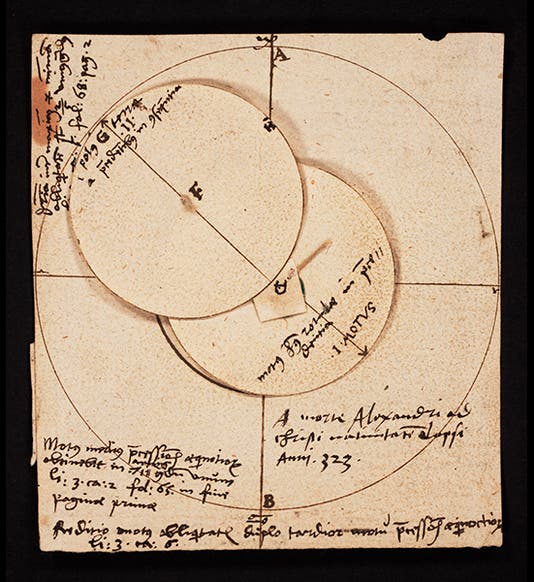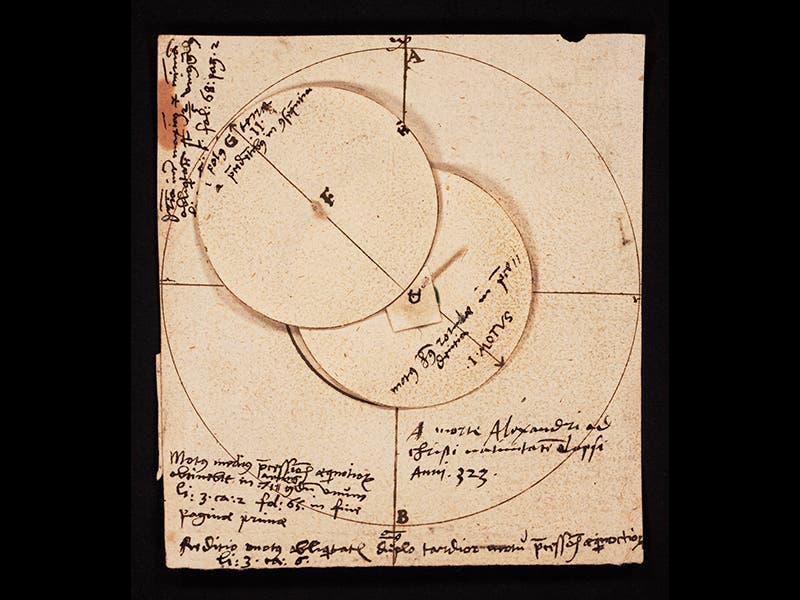Scientist of the Day - Nasīr al-Dīn al-Tūsī
Nasīr al-Dīn al-Tūsī, a Persian astronomer, was born Feb. 18, 1201. Al-Tūsī was the leader of a school of astronomers in Maragha who were critical of some of the predictive devices used by the ancient Greek astronomer Ptolemy, and who invented some new devices to take their places. One device devised by al-Tūsī is a circle than rotates inside a circle exactly twice as large, so that a point on the rotating circle traces out a straight line. The construction is now called a Tusi couple.
One of the current puzzles concerning the Polish astronomer, Nicolaus Copernicus, is how he knew about al-Tūsī 's work. Because he certainly did. There is a diagram of the Tusi couple in Copernicus great work, On the Revolutions of the Heavenly Orbs (1543), but without a mention of al-Tūsī. Historians have considered the possibility that Copernicus might have invented the Tusi couple independently of al-Tūsī, but that doesn't seem too likely, especially since Copernicus uses the same lettering labels as al-Tūsī, which are not the letters that a Western astronomer would normally use.
Even more intriguing is the fact that our Library’s copy of Copernicus’s book contains, loosely inserted between its pages, a small hand-drawn Tusi couple made out of paper that replicates the diagram in Copernicus' book, except that now the paper circles, held together by a thread, can be rotated to produce the rectilinear movement. We presume that this volvelle, as such working devices are called, was made by the original owner of the book, but we do not know who that was, even though experts have carefully studied the handwriting. There is no mention of al-Tūsī in the annotations on the device. So the Library has its own “al-Tūsī” mystery waiting to be solved. The images show the Tusi couple as it appears in a manuscript of al-Tūsī (third image above), the printed diagram in Copernicus’s book (fourth image), the working Tusi couple volvelle laid into our copy (first image), and an animation that shows how a Tusi couple manages to produce rectilinear motion from a rotating circle (second image).
Dr. William B. Ashworth, Jr., Consultant for the History of Science, Linda Hall Library and Associate Professor, Department of History, University of Missouri-Kansas City










